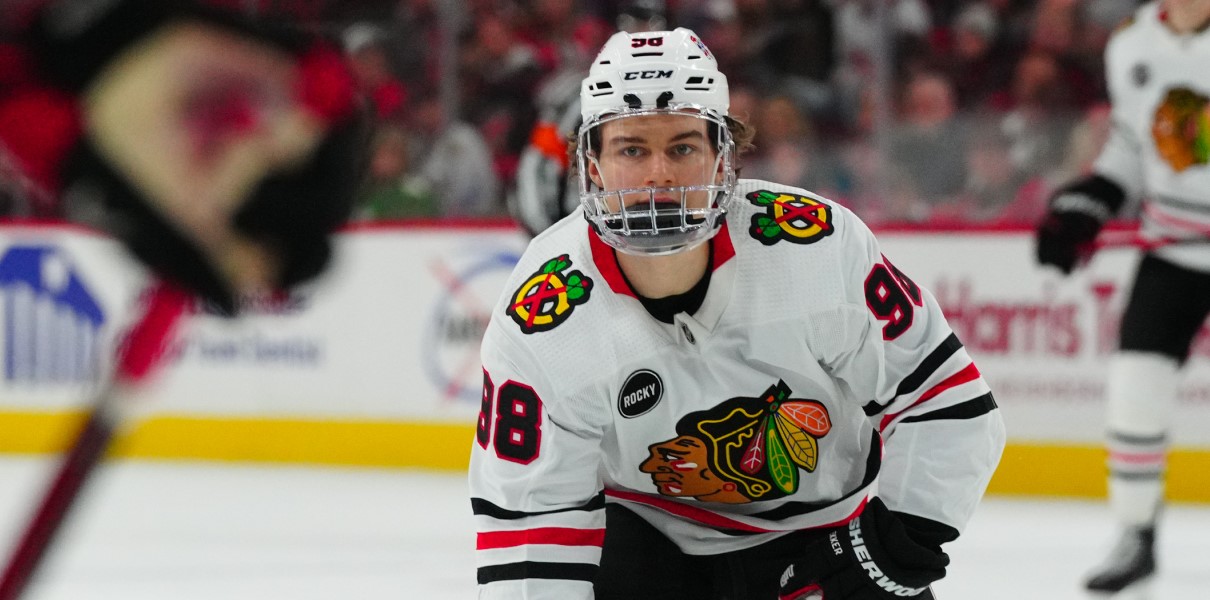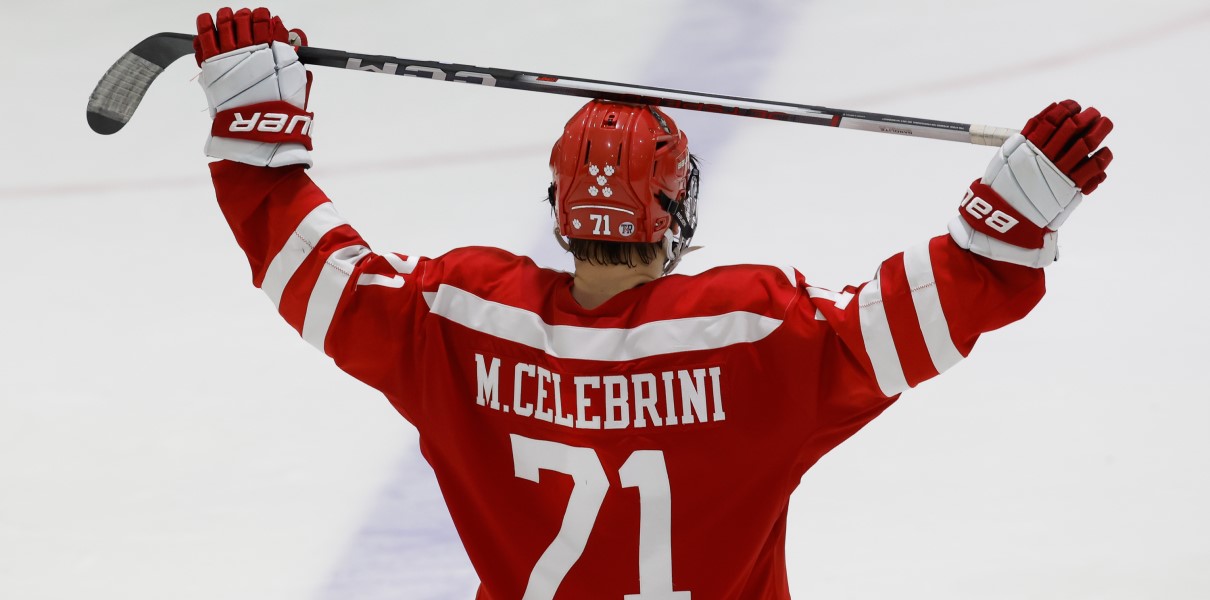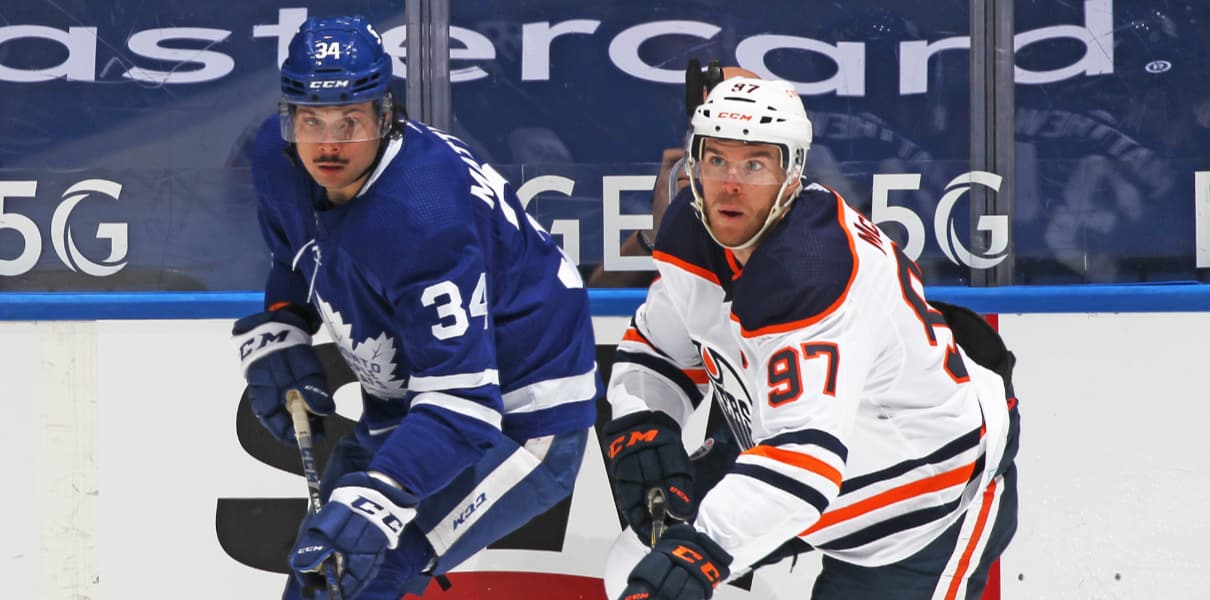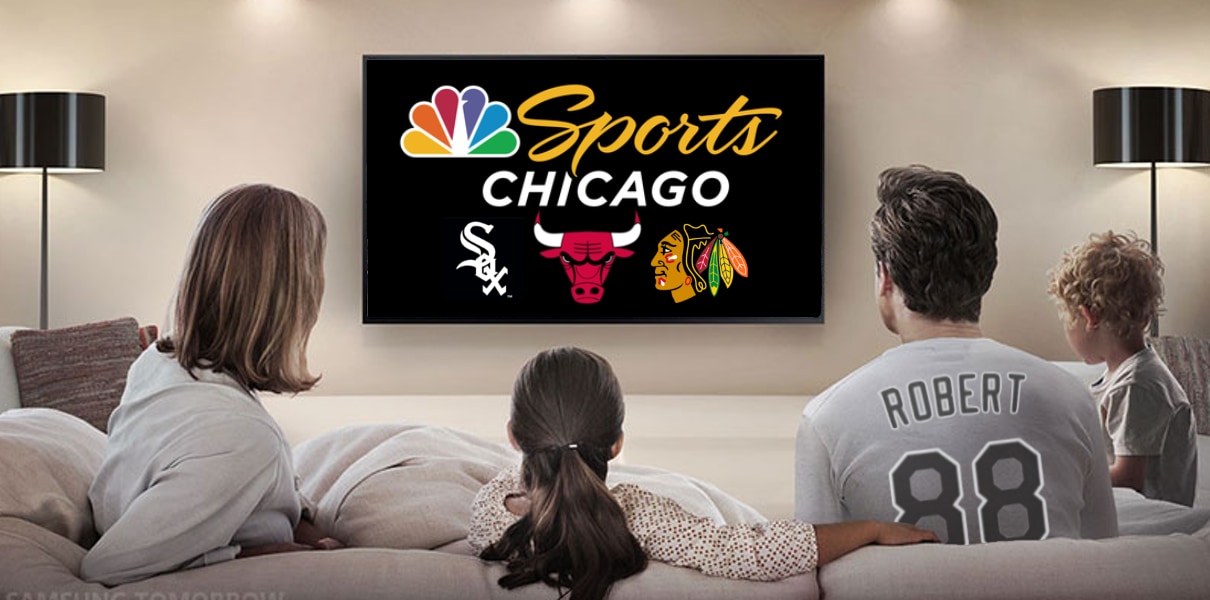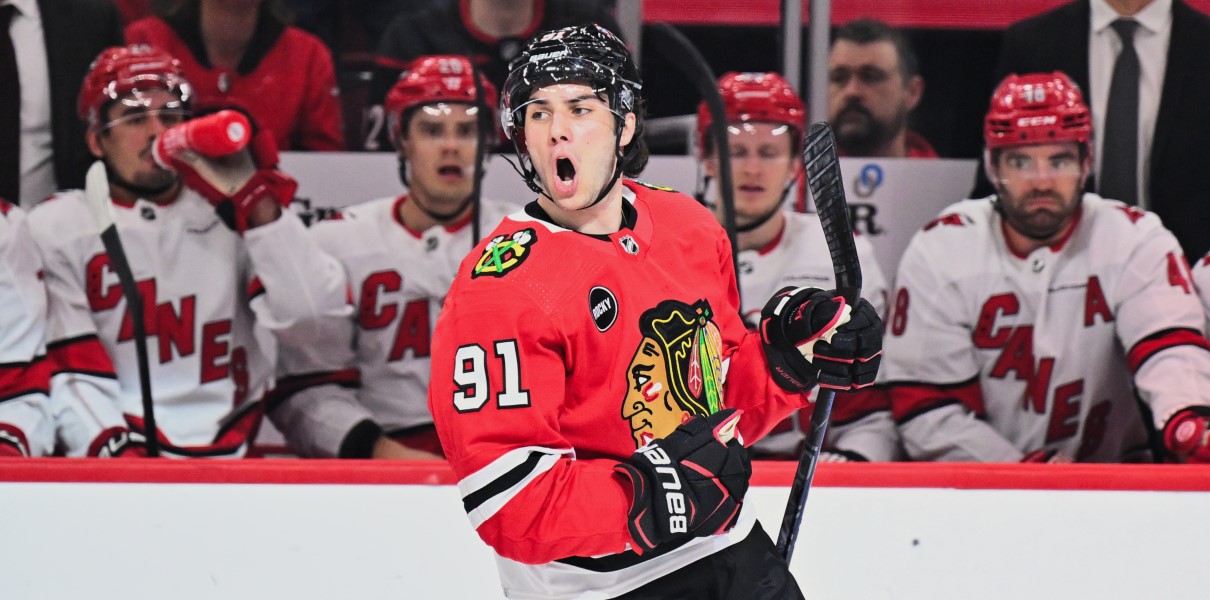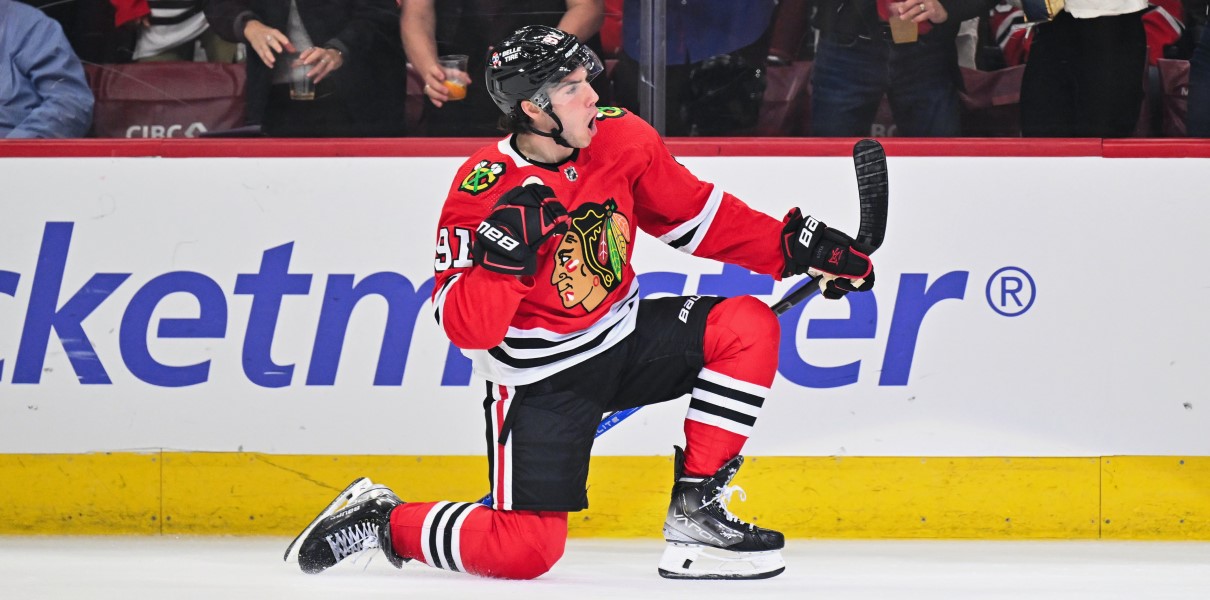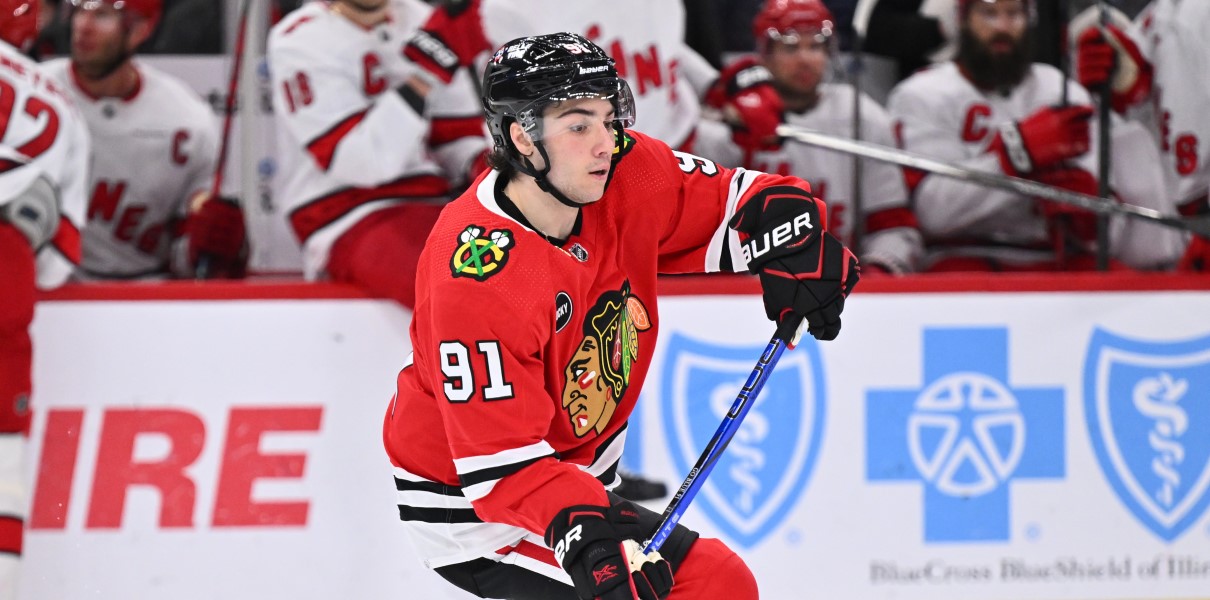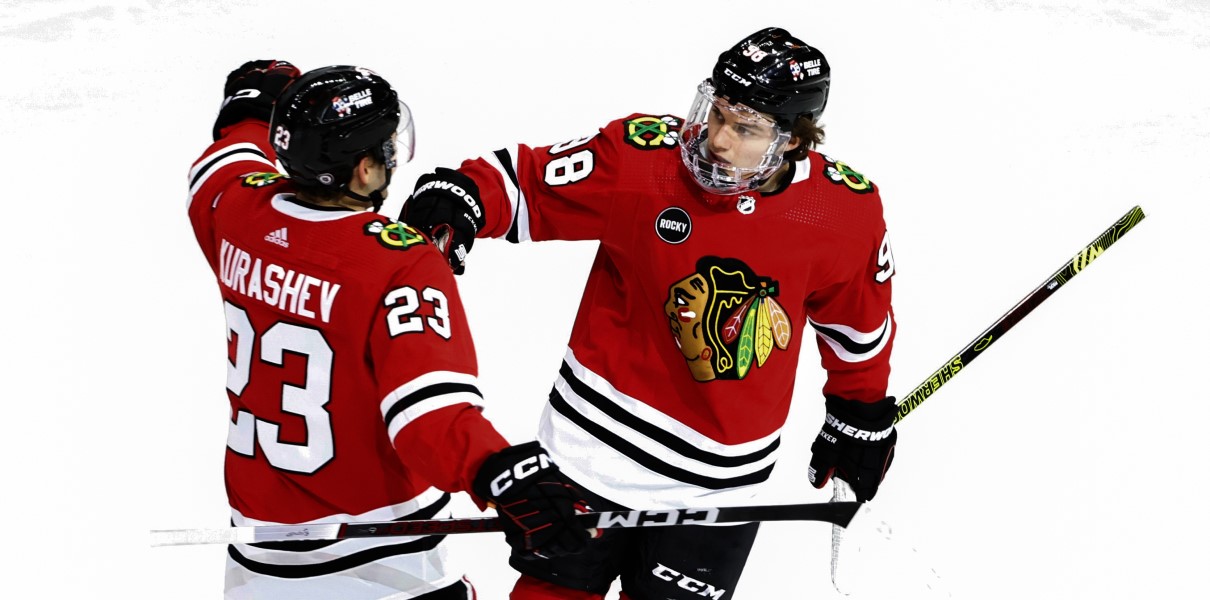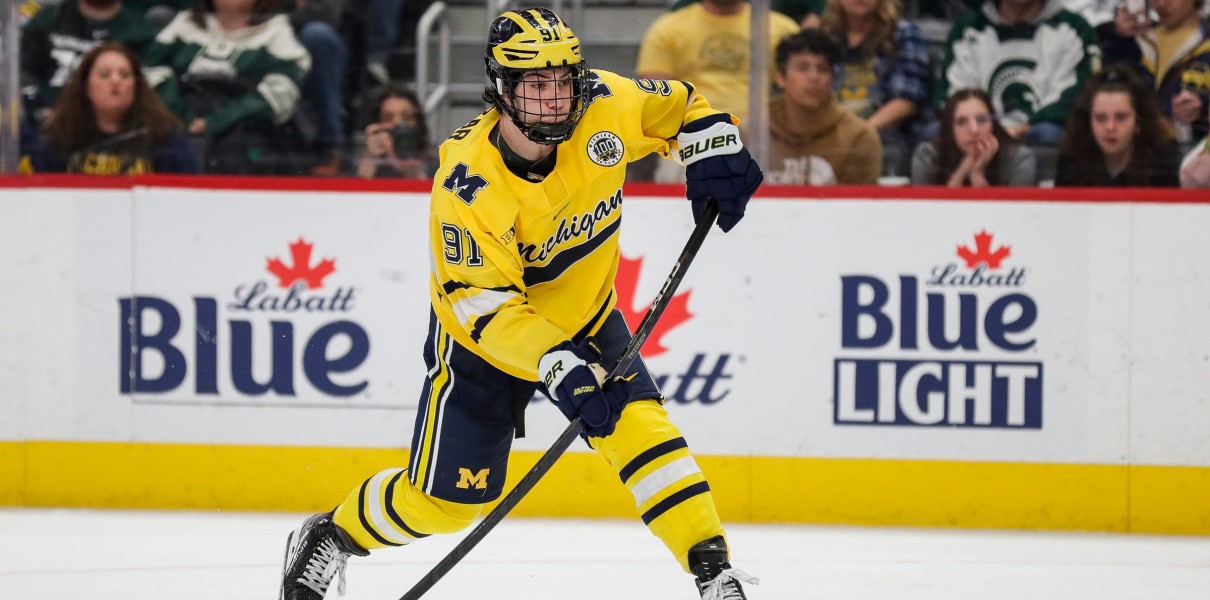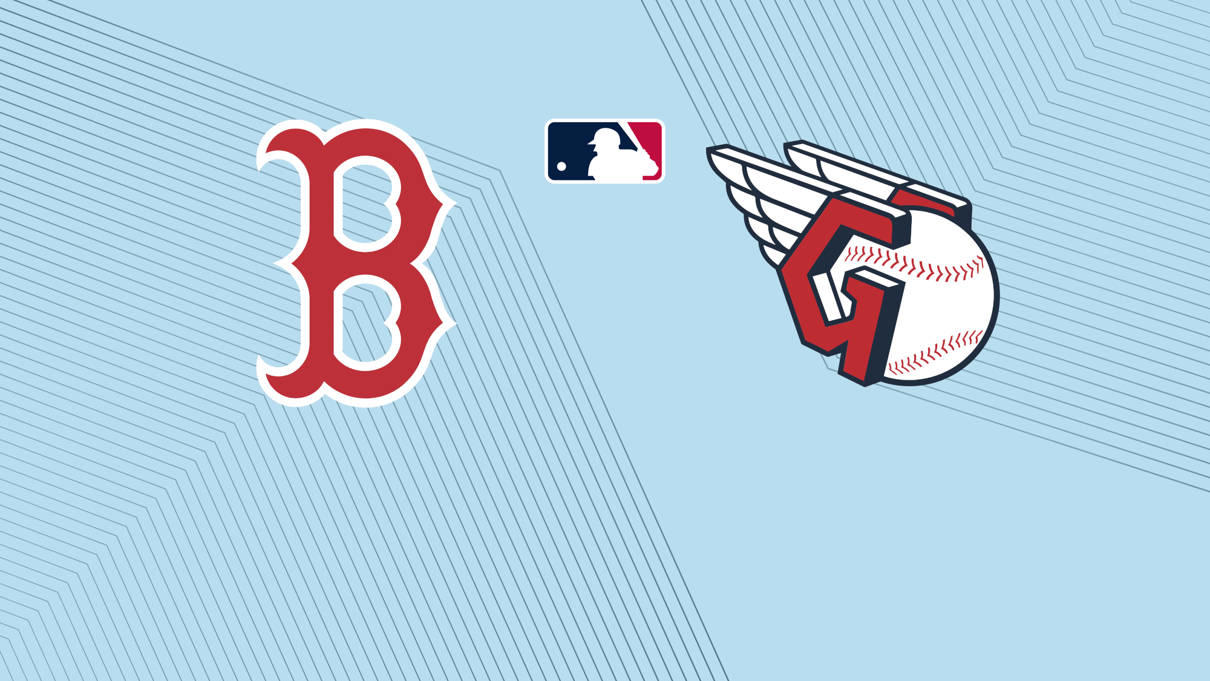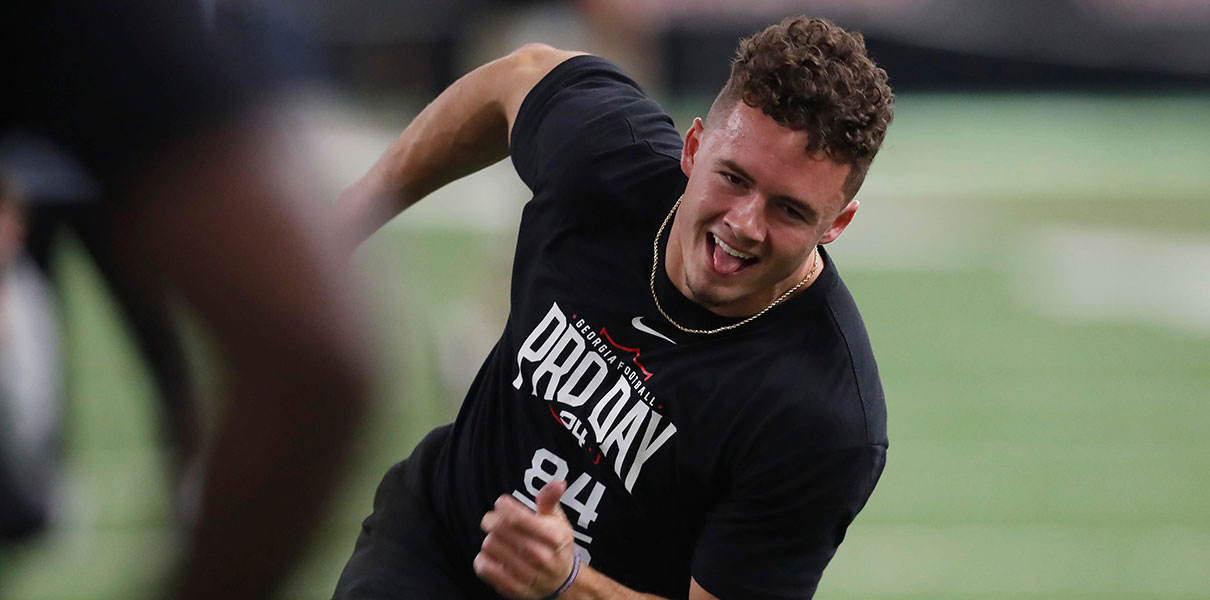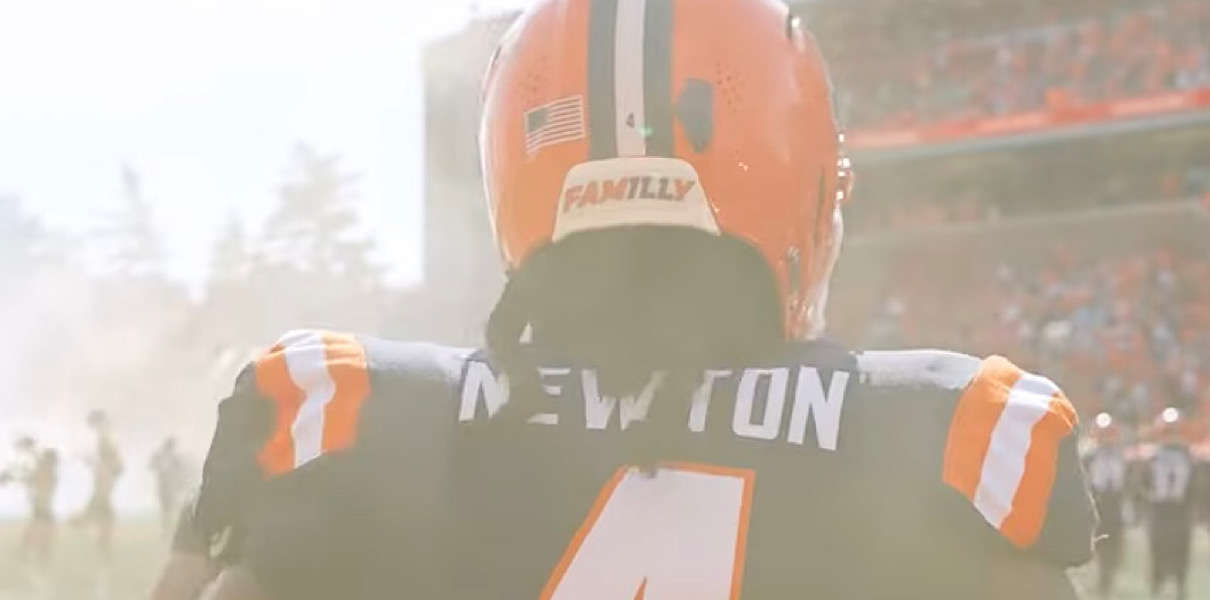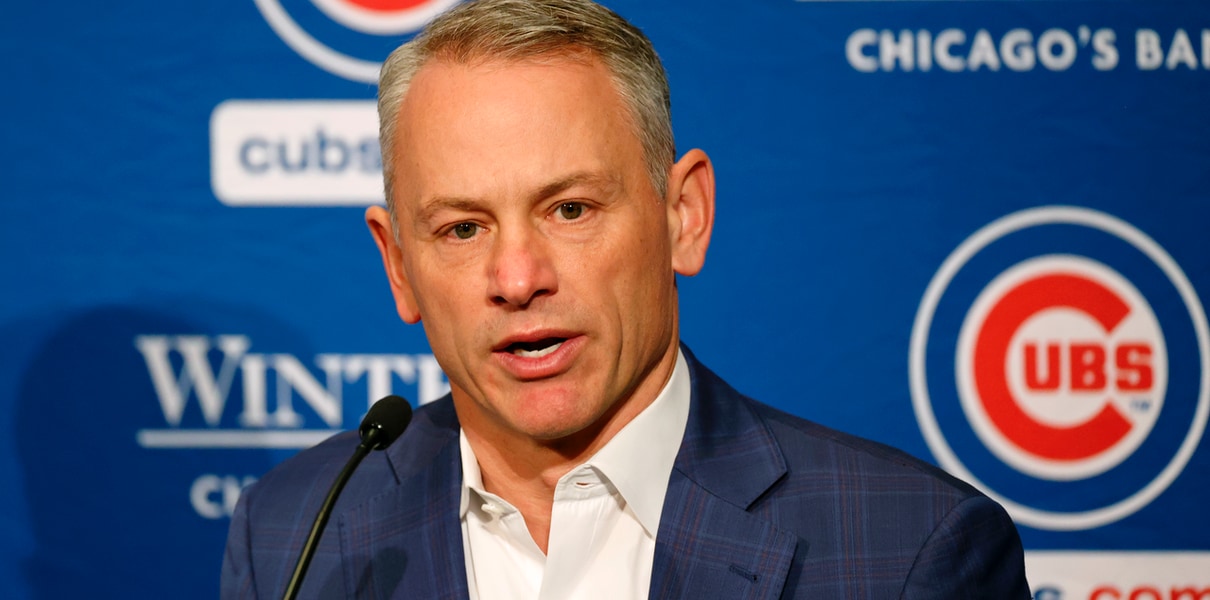The Chicago Blackhawks are an organization in transition, now fully accepting and embracing a rebuild (one year after their previous “rebuild” was thrown to the side for a summer spending spree).
General manager Kyle Davidson has been clear that he intends to invest more time and energy in two things: building the right culture throughout the organization — i.e. on and off the ice — and investing more heavily in developing prospects the right way. The former is necessary, and the latter is a clear move into a more sustainable building process than the organization has had in years.
And that investment in development is a strong talking point when we consider not only what the Blackhawks will do to build their prospect pipeline, but how they view the current roster moving forward. It will be front and center — pun intended — when we consider what they have done in the past year and will continue to do with young players in the organization.
Chicago has holes to fill. Lots of them. We already discussed the situation in net, where the Hawks have one (1) goaltender with any NHL experience signed for next season. An equally troubling position is at center, where the Blackhawks have some huge questions to answer.
When we examined the future of Dylan Strome previously, we considered a modest bridge deal because of the lack of center depth in the organization. More indications now are that Strome won’t receive a qualifying offer, and may not be back with the organization. A trade is possible at/around the NHL Draft in early July.
If Strome does indeed depart to help accelerate the assets available to build the organization the right way, what does the Hawks’ depth look like at the center position?
The short answer: not great.
The slightly longer answer: there’s potential, and it comes at a cost that is still TBD.
On Thursday, Scott Powers at The Athletic wrote a solid breakdown of what the next contract could look like for Kirby Dach. In that article, Powers notes that Dach is still viewed as a center by the organization despite his struggles in the faceoff circle. And his next deal will be predicated on him taking a significant step forward as a center in the NHL.
“The Blackhawks hockey operations staff talked about a lot of different possibilities of what they’d be comfortable paying Dach if he elevated his game. The consensus was a little south of $5 million on a two-year bridge contract. If Dach sought a long-term extension, the Blackhawks thought somewhere around $6 million would be the going rate.
And then the season began and nothing went according to plan. Dach’s season was very much like the overall team’s season. He just didn’t perform as expected. He could hold his own defensively against top centers, but he wasn’t producing like a top center. It became clear after a few months the Blackhawks wouldn’t have to worry so much about what Dach’s next contract would look like. He wasn’t going to test their budget, at least not in his second contract.”
According to Powers, “Dach’s fair market value was probably a two-year bridge deal with a $2.65 million cap hit.” And he notes that those inside and outside the organization acknowledge that Dach having been the third overall selection in his draft class plays a role in the continued efforts of the club to make it work with him. (Nevermind the fact the Hawks drafted his brother, Colton, last year.)
But the idea that the Blackhawks view Dach as a center is a fascinating one when you look at how they used the roster in the second half of last season, the likely departure of Strome and wrap all of that in the context of what could have on the roster moving forward.
When we look at the numbers from Jan. 1 until the end of the regular season, we can take some data away from the performances of the Hawks’ forwards based on how they were used. At that point, Davidson was working as the interim general manager with eyes on winning the permanent job (which he did) and head coach Derek King was similarly an interim with hopes of a full-time gig (still TBD).
Chicago’s top seven centers based on total faceoffs taken is full of players who have either zero, one or two years left on their contract, with the lone note of interest in that group being Sam Lafferty receiving a two-year extension after being acquired from Pittsburgh during the season.
Here are the Hawks’ top seven centers based on total faceoffs taken after Jan. 1 this past season:
• Jonathan Toews — 41 games, 744 total faceoffs, 58.6 win pct
• Dylan Strome — 49 games, 739 faceoffs, 52.6 win pct
• Kirby Dach — 40 games, 251 faceoffs, 33.1 win pct
• Ryan Carpenter — 32 games, 244 faceoffs, 52.1 win pct
• Sam Lafferty — 46 games, 226 faceoffs, 42 win pct
• Reese Johnson — 19 games, 143 faceoffs, 52.5 win pct
• Henrik Borgström — 35 games, 95 faceoffs, 43.2 win pct
Carpenter was traded at the deadline, so he’s out of the equation. And Borgström remains an intriguing prospect because we keep hearing about his high skill level and see the highlights of his time at the University of Denver but he’s simply never put it together at the NHL level. And, averaging less than four faceoffs per appearance, the Hawks obviously didn’t rely on him much/at all.
If we dig into the use at the dot further, we find that relied increasingly on Toews and Strome at the dot and backed away from Dach as a center in the final two months.
Dach’s average faceoffs taken per game dropped from 10.5 per game in January to 9.0 in February, 3.8 in March and only 2.3 in six appearances in April.
Toews’ average faceoffs per game per month were 17.2 in January, 17.2 in February, 17.9 in March and 19.3 in April.
Strome’s average faceoffs per game were 13.4 in January, 13.5 in February, 17 in March and 15.6 in April.
The other big concern with Dach was, from Jan. 1 through the end of the regular season, 95.2 percent of his total faceoffs taken were at even strength. Toews and Strome, meanwhile, had more than 23 percent of their faceoffs coming on special teams.
Of course Dach needs to show the organization that he deserves faceoffs on either the power play or penalty kill, but they cannot promote him back to the top line if he can’t win faceoffs more frequently. And the questions about his long-term fit at the pivot are amplified by his usage as the Hawks got deeper into the regular season.
Borgström has one year remaining on his contract with a $1 million cap hit. Lafferty, Reese Johnson and sometimes center Tyler Johnson have two more years on their respective deals. Dach and Strome are currently heading to RFA.
Lafferty and Reese Johnson are better positioned to be fourth line centers, and Reese was adequate at the dot when he was healthy and available last year. Lafferty actually skated as a defenseman at times for the United States in the World Championship and might be able to swing some third-line duty if needed. But that would depend largely on what the makeup is of the Hawks’ bottom six overall next year.
Which — again, assuming Strome is no longer in Chicago — leaves us with two elephants in the room.
• What will Toews’ role be moving forward?
• Can Dach take a significant leap forward and become a center worthy of a role on one of the top two lines?
Right now, the Blackhawks don’t have a No. 1 center on their payroll. Toews’ offense improved down the stretch and he continues to be one of the best in the game at the dot, but how much they can rely on him on both special teams at his age is a huge question.
Most importantly, the Blackhawks need Dach to not take a step forward, but leap back to the player we saw when he was dominant in the “playoff” bubble during COVID. If he can make the same improvements we saw from Strome in the second half of last year, he could be worthy of where the Blackhawks selected him a few short years ago. If not, his next contract could be his last in Chicago and the center issues will only become more significant.






